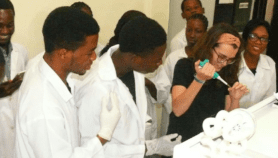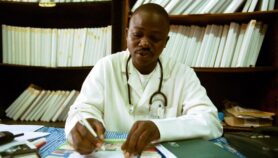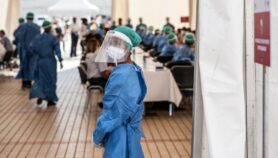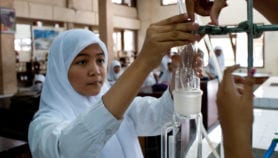Send to a friend
The details you provide on this page will not be used to send unsolicited email, and will not be sold to a 3rd party. See privacy policy.
Africa must nurture its existing scientific institutes rather than continue to churn out new centres of excellence, argues Narciso Matos.
Few people would question that Africa’s economic development relies on building its own base of scientific and technological capacity. But most African countries seem unsure how to create such indigenous capacity. Should they create new centres of excellence? Or should excellence be encouraged to flourish in existing centres?
Given limited resources, funds should be invested into existing frameworks, by strengthening human and physical resources and facilities. Across Africa, scientists are doing excellent work in scientific and technological areas relevant to their countries’ needs. But in most cases they are doing it under difficult circumstances.
In my three decades working with African researchers I have found that the continent’s problem is not necessarily an absence of expertise. It is often that policymakers neglect both African scientists’ knowledge of local problems and their ability to contribute to local solutions.
The need for more
Scientific progress made in Africa is often undertaken in arduous working environments. Most African scientists lack access to up-to-date equipment, current journals or modern facilities. They rely on meagre and unpredictable budgets provided mainly by external donors. Often, there are not enough scientists within a particular field in a country to create the ‘critical mass’ that is vital for scientific breakthroughs.
Africa’s science and technology workers need more reliable resources to take the quality of their work to a higher level. They need more support to integrate into national, regional and international networks. They need more help translating research results into goods and services that will benefit their communities. And they need a larger capacity to innovate, to publish results and to train the next generation of scientists.
White elephants
It is a waste of valuable resources to overlook the potential of existing scientists and institutions and make an ill-considered decision to create new centres. New ‘centres of excellence’ are expensive and can become white elephants. African decision-makers often assume there is little, if any, capacity in their own countries — a mistake that leads them to create new centres rather than empower existing ones.
My colleagues and I at the Carnegie Corporation of New York, and the other members of the Partnership for Higher Education in Africa, are taking a different route. We are focusing our efforts on building the capacity of established universities in African countries.
In the past year or two, I have sought Nigerian academic leaders’ opinions on the African Institute of Science and Technology (AIST), for which the Nigerian government has pledged land and funds. Similarly, in Tanzania, I have asked academics what they think about the AIST campus planned for Arusha.
Most have only heard or read about these multi-million dollar initiatives. Very few were consulted about their creation or the possibility of collaboration. Solutions to Africa’s scientific capacity needs are being adopted without thorough assessment of existing capacity in the very countries where new centres will be established.
Outside looking in
Africans are not the only culprits in overlooking homegrown solutions. Sometimes the oversight happens because of non-African funders who tie their support to the use of experts or technological systems from their own countries. Creating a new centre gives them an impressive receipt for the money spent. But these funders do not consider who will pay the costs of sustaining the new centre.
Creating new centres also circumvents the hassle of understanding why the old ones lose their best and brightest to other institutions and other countries, or why experts trained abroad are not producing results or publishing in journals as they did abroad. This is no way to solve Africa’s problems.
Listen and learn
African scientists are willing to explain what they need and get the support they deserve from their governments and external donors — provided that policymakers and funders are willing to listen.
They can tell supporters about the commitments necessary to strengthen or revitalise existing institutions’ capacity. They are well-versed in training staff locally and internationally. Finally, they also understand the efforts needed to upgrade facilities and make essential equipment available.
Those who listen will hear these scientists’ desire to become equal and active members of the international scientific community.
Before creating new scientific and technological centres, careful assessment of the relevant resources already available in the country or region is needed. This must be followed by identifying the steps necessary to maximise that capacity, and then outlining the requirements for training, research and contribution to development elsewhere. Finally, the monetary and technical support needed to promote networks of research and training groups interested in working together must be identified.
Nurturing existing resources to spur Africa’s development to the cutting edge of scientific and technological knowledge is a far greater, and more challenging, task than investing in new institutions that operate at the margin of the political and regulatory framework of the country and quickly become obsolete.
It is a formidable challenge but if poverty is to be overcome, it must be met.
Narciso Matos is chair of the International Development Program at the Carnegie Corporation of New York, former secretary general of the Association of African Universities and rector of the University Eduardo Mondlane, in Mozambique. [email protected]













